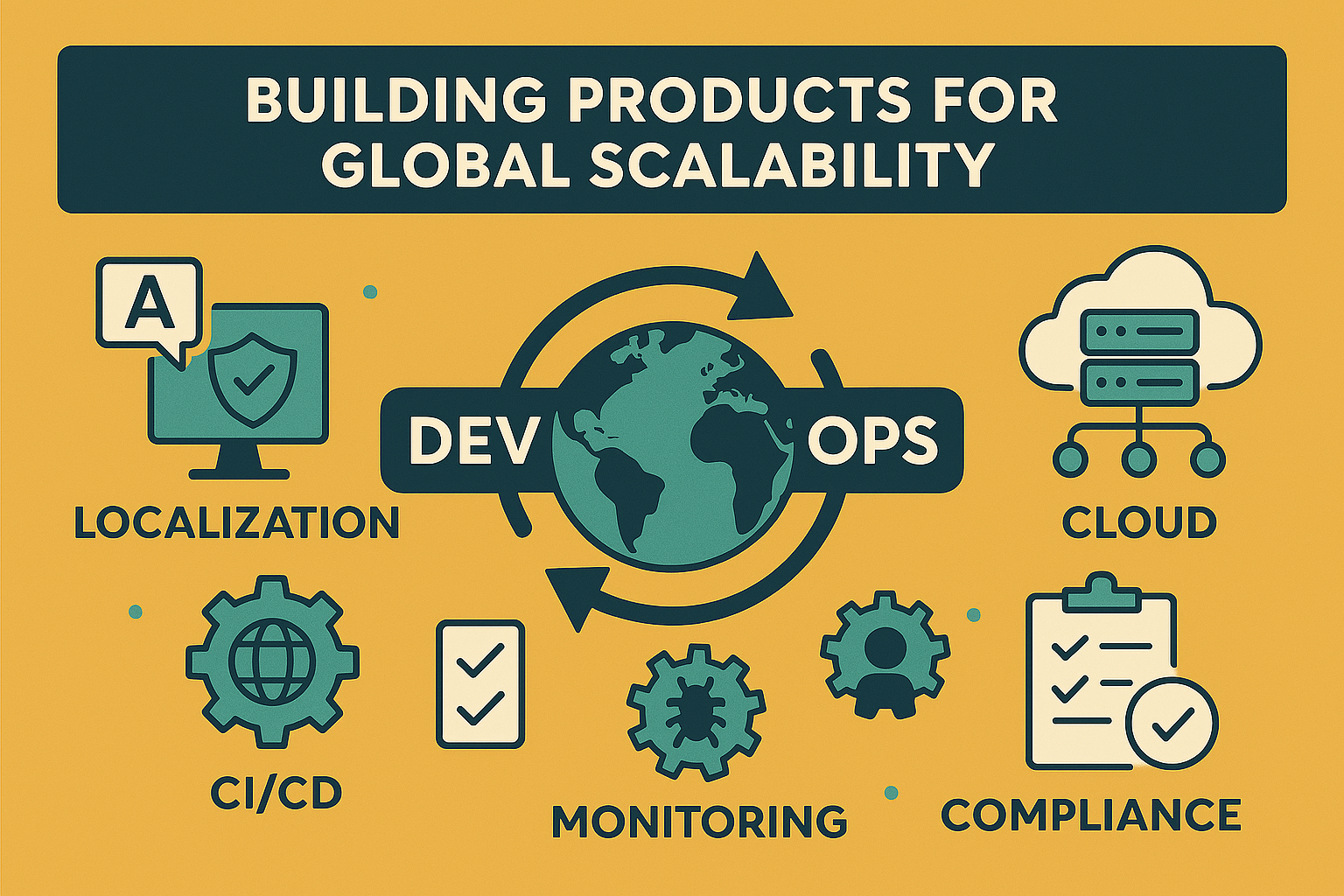When your product is ready to move beyond borders, scalability becomes the critical design question—not just for users, but for performance, compliance, localization, and cultural relevance. Building for global scalability is not just a tech decision; it’s a strategic one.
What Does Global Scalability Really Mean?
Scalability is the ability of a product to grow and adapt without breaking or becoming inefficient. Global scalability takes that a step further—it’s about ensuring your product performs well across:
Geographies (network latency, data compliance)
Languages and cultures (localization)
User volumes and behaviors (traffic spikes, device diversity)
It’s less about making a product bigger and more about making it resilient, accessible, and adaptable across regions.
Architectural Foundations
To scale globally, your product architecture must be:
Cloud-native: Use distributed cloud platforms (AWS, GCP, Azure) with autoscaling and multi-region support.
Modular and composable: Microservices allow you to scale only what you
Stateless services: Reduces dependency on local state, which simplifies horizontal
Pair this with a content delivery network (CDN) to minimize latency across geographies.
Localization and Internationalization
Scalability isn’t just technical—it’s also linguistic and cultural.
Internationalization (i18n): Design your product to support multiple languages, date formats, currencies, etc.
Localization (l10n): Adapt interfaces and content to local cultures, right down to images, idioms, and regional laws.
A globally scalable product must ―feel local‖ to the end user, regardless of where they access it.
Data and Compliance Considerations
Different regions have different regulations around data storage and privacy (e.g., GDPR in Europe, CCPA in California, Data Protection Acts in India).
Use regional data centers to meet data residency
Implement role-based access controls and audit trails for compliance reporting.
Security and compliance are as important as performance in global readiness.
Performance and Observability
Monitoring global performance in real-time is key:
Use global load balancers to route traffic efficiently.
Track latency, throughput, and uptime per region.
Set up alerting and tracing for faster debugging across distributed systems.
Test with users in different regions to uncover UX issues invisible in your home base.
Conclusion
Global scalability is a discipline that touches engineering, design, compliance, and product strategy. It’s about preparing your product not just for more users—but for different users. With thoughtful architecture, cultural adaptability, and regulatory awareness, your product can cross borders with confidence and create value worldwide. It’s not just about reaching the world—it’s about being ready when the world reaches you.





